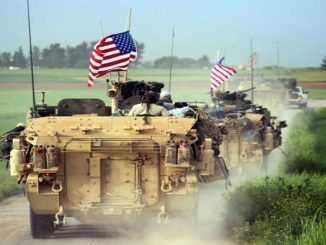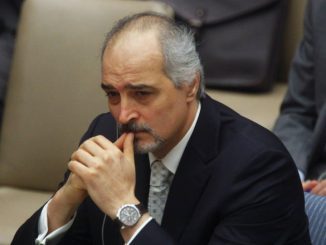
The United States and Russia hailed a breakthrough deal on Saturday to put Syria’s peace process back on track, including a nationwide ceasefire effective from sundown on Monday.
The deal, agreed upon by US Secretary of State John Kerry and Russian Foreign Minister Sergey Lavrov, aims at halting fighting in Syria and moving towards a political transition after over five years of combat between President Bashar al-Assad’s forces and opposition rebels.
“Today, Sergei Lavrov and I, on behalf of our president and our countries call on every Syrian stakeholder to support the plan that the United States and Russia have reached, to … bring this catastrophic conflict to the quickest possible end through a political process,” US Secretary of State John Kerry said.
Russian Foreign Minister Sergei Lavrov said that despite continuing mistrust, the two sides had developed five documents that would enable coordination of the fight against armed groups and a revival of Syria’s failed truce in an enhanced form.
“This all creates the necessary conditions for resumption of the political process which has been stalling for a long time,” Lavrov told a news conference.
What the agreement includes
A nationwide ceasefire by Assad’s forces and the US-backed opposition is set to begin across Syria at sundown on Monday.
That sets off a seven-day period that will allow for humanitarian aid and civilian traffic into Aleppo, Syria’s largest city, which has faced a recent onslaught.
Fighting forces are to also pull back from the Castello Road, a key thoroughfare and access route into Aleppo, and create a “demilitarised zone” around it.
Also on Monday, the US and Russia will begin preparations for the creation of a Joint Implementation Centre that will involve information sharing needed to define areas controlled by the Jabhat Fateh al-Sham group (formerly known as al-Nusra Front) and opposition groups in areas “of active hostilities”.
The centre is expected to be established a week later, and is to launch a broader effort towards delineating other territories in control of various groups.
As part of the arrangement, Russia is expected to keep Syrian air force planes from bombing areas controlled by the opposition. The US has committed to help weaken Jabhat Fateh al-Sham, an al-Qaeda affiliate in Syria that has intermingled with the US-backed opposition in several places.
A resumption of political dialogue between the government and opposition under UN mediation, which was halted amid an upsurge in fighting in April, will be sought over the longer term.
Will the agreement work
For the agreement to work, Russia will need to persuade the Syrian air force to stop strikes on anti-government positions, which have killed large numbers of civilians.
In turn, Washington has to get the opposition groups it backs to separate themselves from Jabhat Fateh al-Sham, which has allied itself with a range of rebels at different points in the fluid conflict.
“The armed opposition in Syria now faces what is perhaps its biggest and most momentous decision since they chose to take up arms against the Assad regime in 2011,” said Charles Lister, a senior fellow at the Middle East Institute think-tank.
Mainstream rebels appear reluctant to withdraw from frontlines where Jabhat Fateh al-Sham fighters are also present because of fears the ceasefire will fail, he said.
“For this reason alone, many opposition figures see the US-Russia talks and whatever comes from them as a conspiracy against their long and hard fought for revolution. It will be hard to change this mindset,” Lister added.
The Syrian crisis began as a peaceful demonstration against the injustice in Syria. Assad regime used to fire power and violence against the civilians and led to armed resistance. 450.000 Syrians lost their lives in the past five years according to UN estimates, and more than 12 million have lost their homes.



